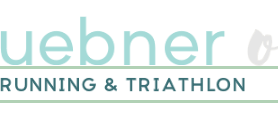I loved reading Balto and the Great Race every year with my third-graders. Balto is a true story that took place in 1925 about mushers and sled-dog teams delivering medicine to children with Diphtheria in Nome, Alaska, through blizzard conditions. This story was the main reason the Iditarod began in 1973. This year, on March 5, over 80 mushers and their dog-sled teams will begin the race in Anchorage and cross the finish line in Nome, a total of 975 miles.
A few years ago, I decided to have my students choose a musher to follow throughout the Iditarod, and this began a classroom tradition that evolved into many different activities culminating in my class participating in our annual literature parade as a dog-sled team pulling their teacher as a musher. Here's a VIDEO of my class.
Since this tradition of following the Iditarod was such a great learning experience (and a complete blast), I wanted to share some activities and resources with you.
First of all, there are many different leveled readers about Balto to introduce how the Iditarod came about. Balto and the Great Race and The Bravest Dog Ever are the two books I used in my class, but there are plenty of others out there. After reading and discussing the stories, I would introduce the students to the Iditarod website. Under the Race Center tab, students can read all about the mushers participating in the race and view maps and checkpoints of the race. I would have the students carefully choose a musher and fill out a form giving information about their musher and why the musher was chosen. Here is an example of a musher form. After the students chose their mushers, I would decorate my classroom with a race course by simply drawing a line using sentence strips and place the 23 checkpoints along the line (kind of like a long number line). Then I would write the name of the student and the musher they chose on a paw print from a package of paw prints you can purchase at the teacher store. I would place their paw print markers at the starting point on the race course. I also purchased a map of the Iditarod race course from the Iditarod website to post in my classroom.
On the day of the race, which is always on a Saturday morning, it is broadcast live on the Internet, and some or all of it is always recorded on the website. So on the Monday morning after the start of the race, I would show some of the video to the students, and they really enjoyed it, and that let them get a better visual of the race.
Then during the race, every morning we would check the stats of the race, and the students would move their paw to the corresponding checkpoint. Also during the race, I would pretty much theme every subject area to the Iditarod. There are many activities that you can search and find on the Internet. There is also an Education tab on the Iditarod website that provides many ideas and activities. Additionally, the Iditarod chooses a teacher every year to be a part of the Iditarod, and the "Teacher on the Trail" posts a blog along with lesson plans for every subject area, which are pretty amazing. This year's teacher on the trail is Laura Wright, and here is her blog along with curriculum links.
All in all, following the Iditarod is a great learning experience, and I highly recommend it! Feel free to contact me with any questions or suggestions for implementation and ideas.









No comments:
Post a Comment